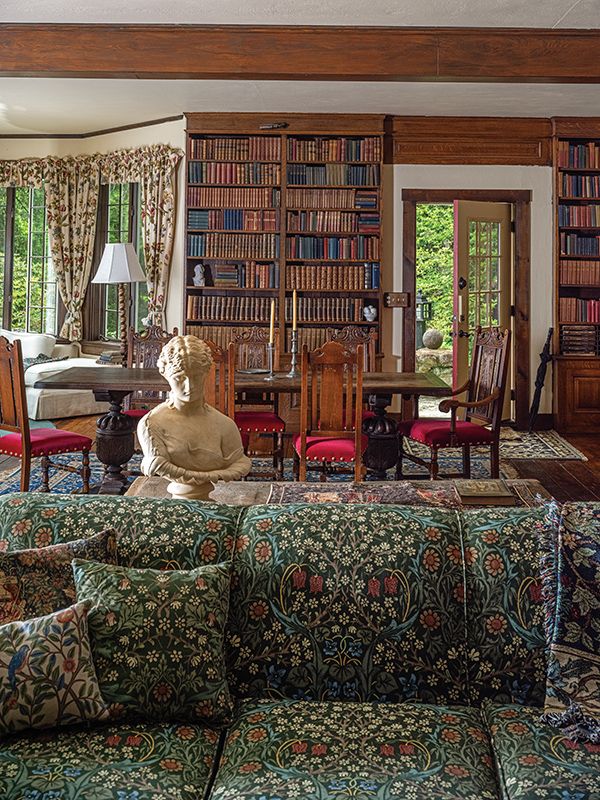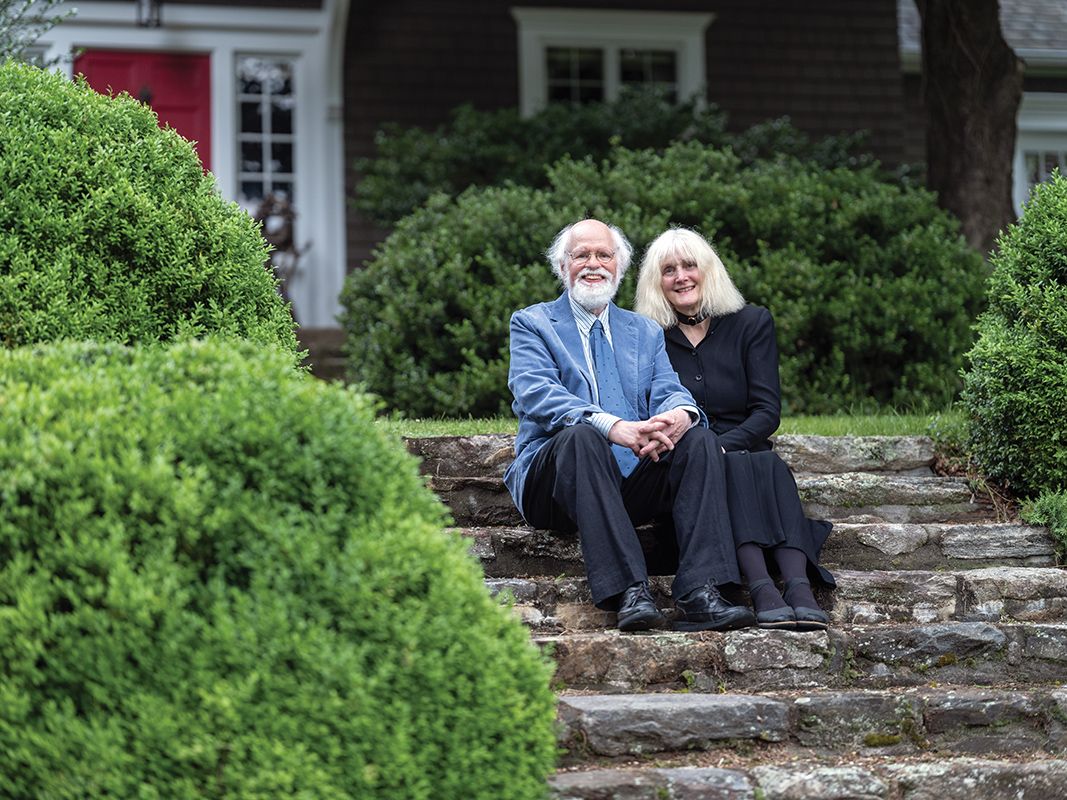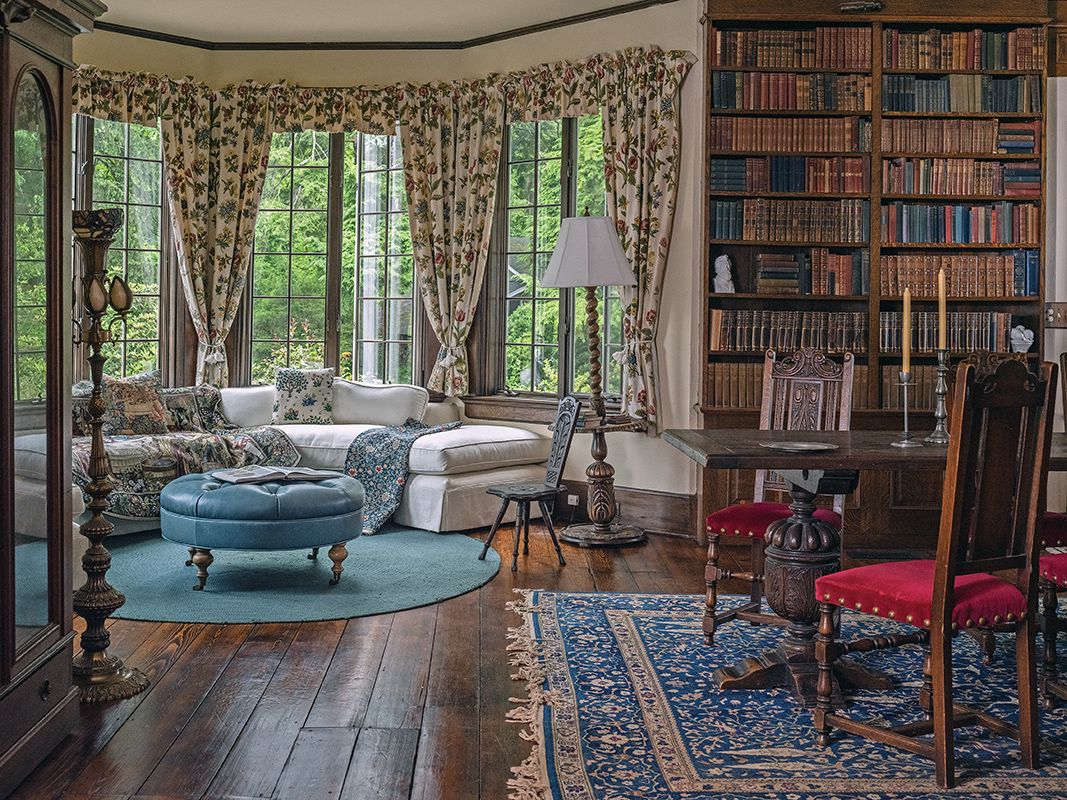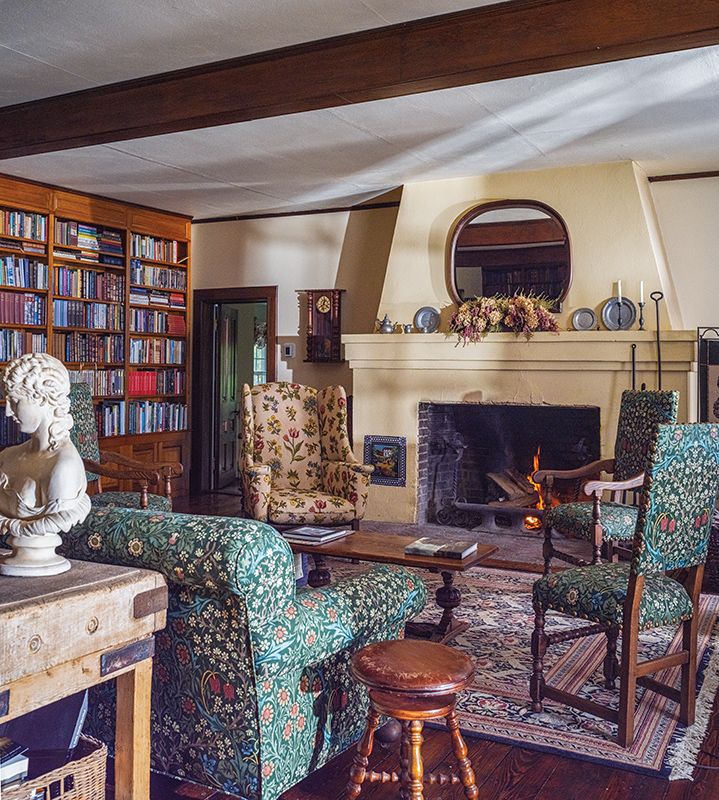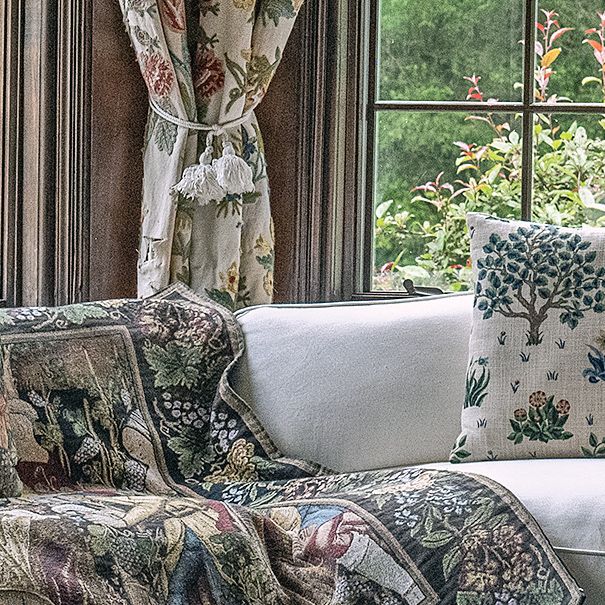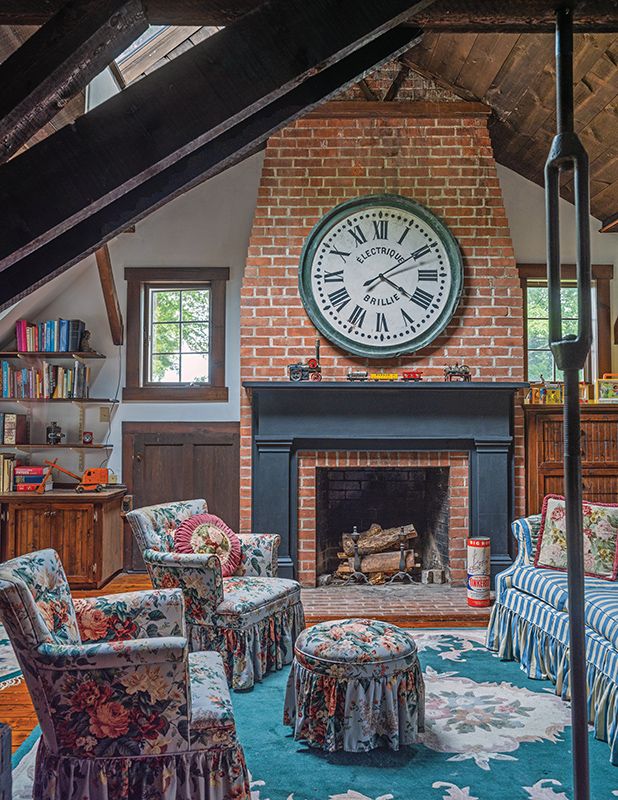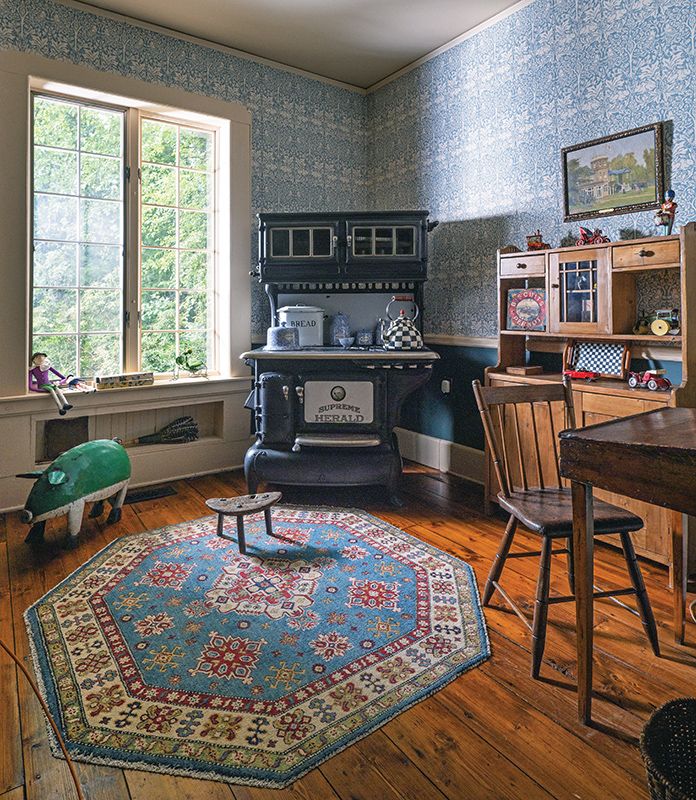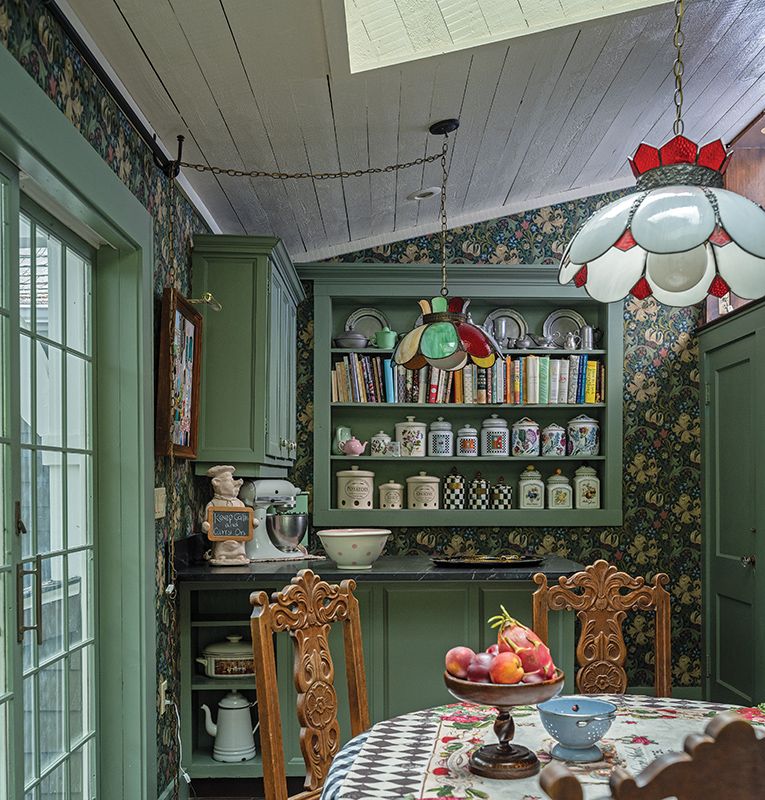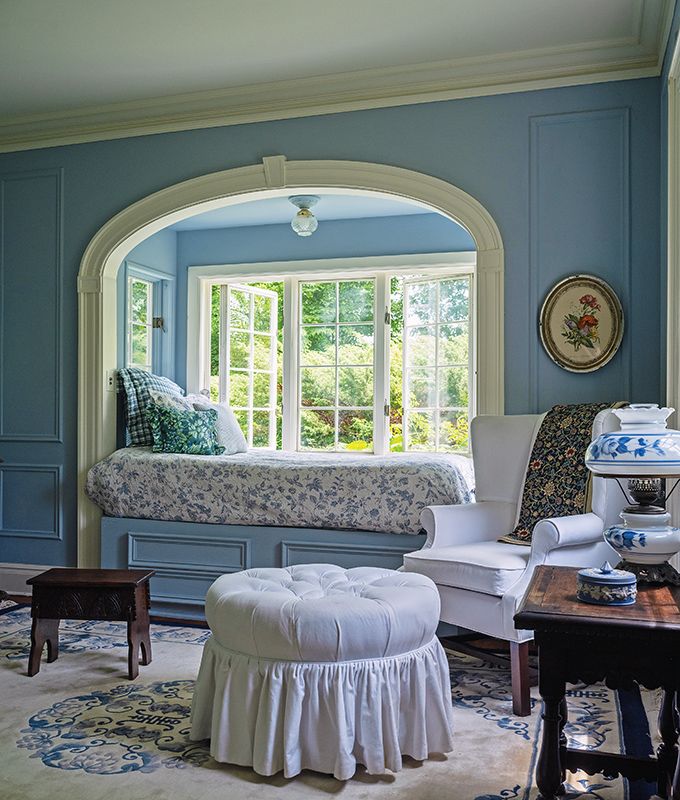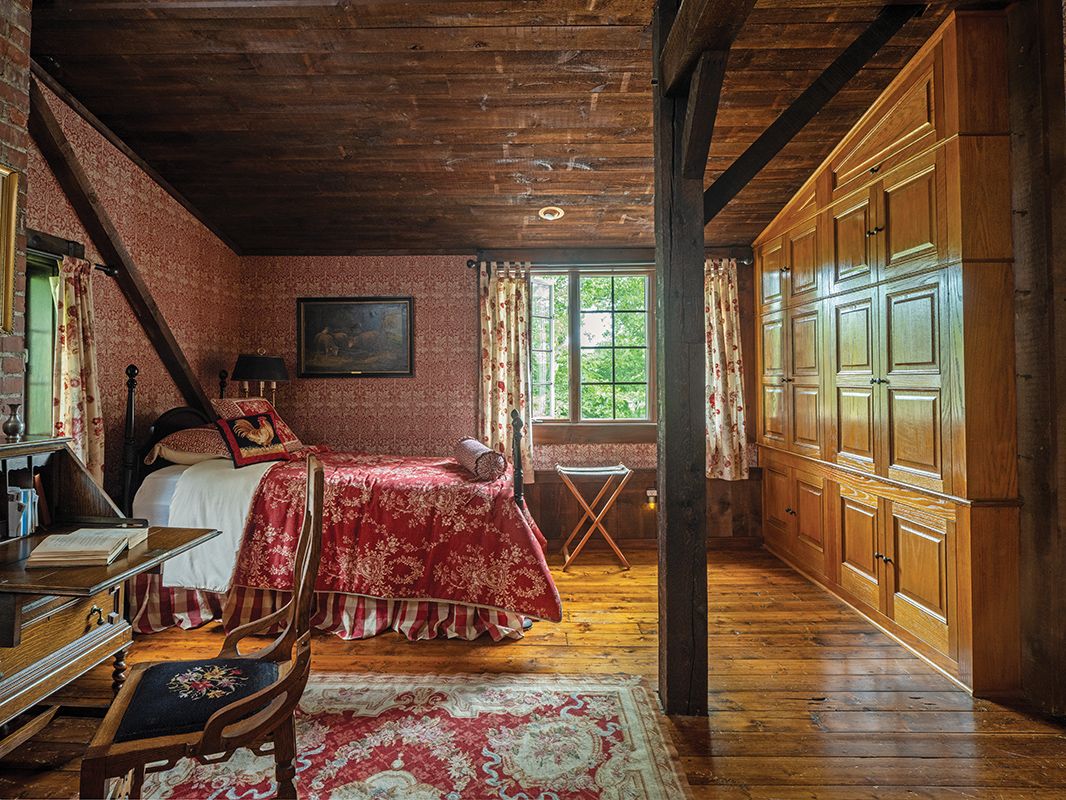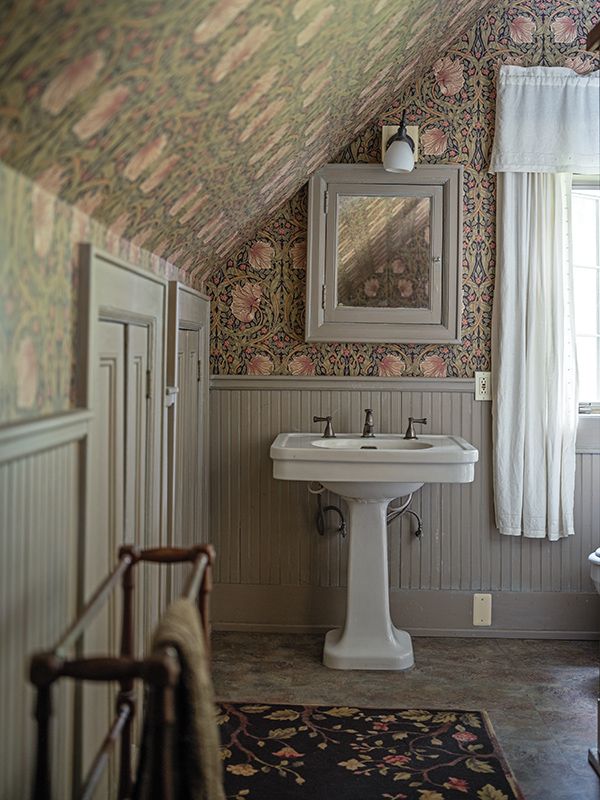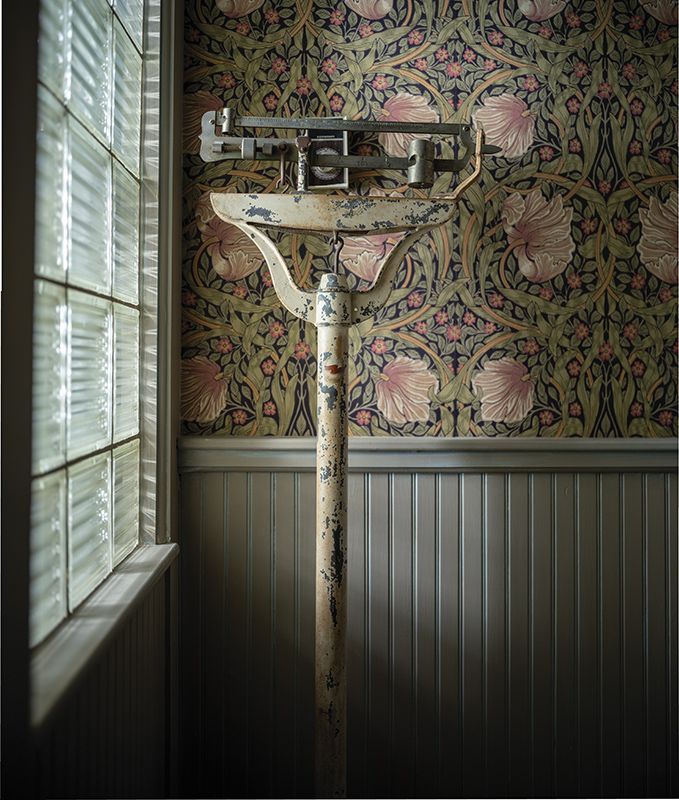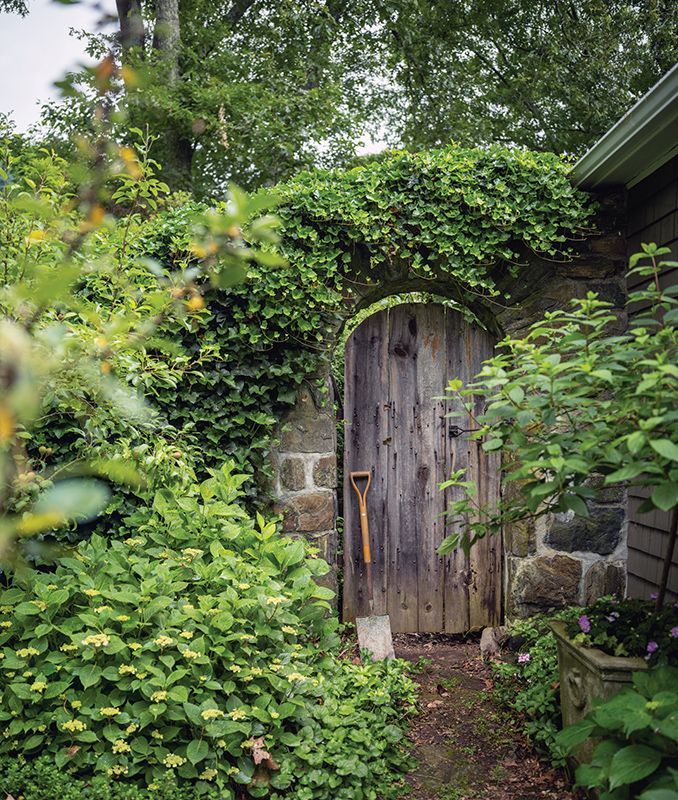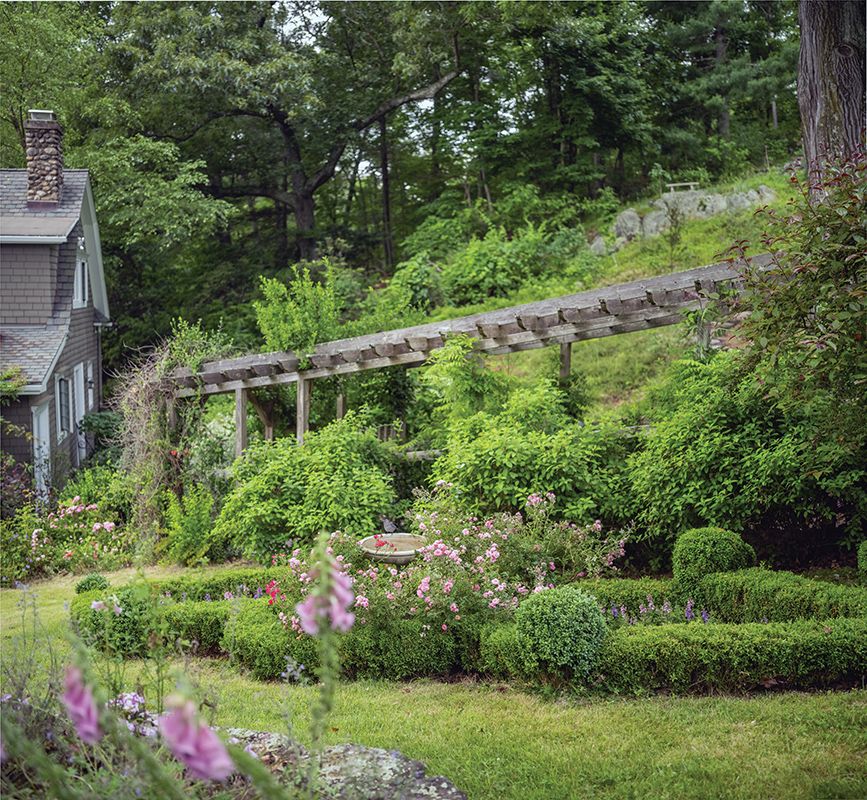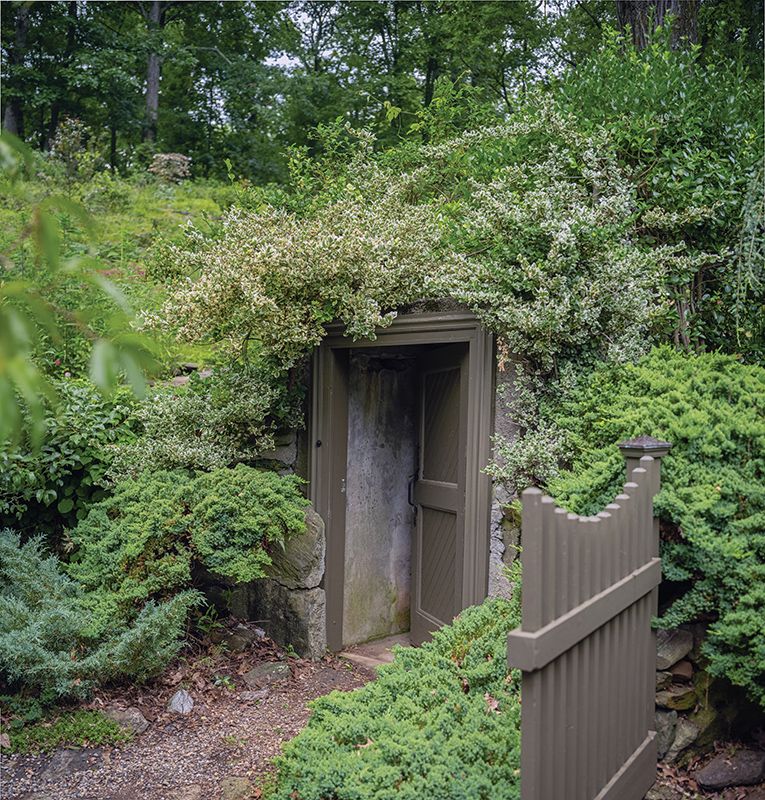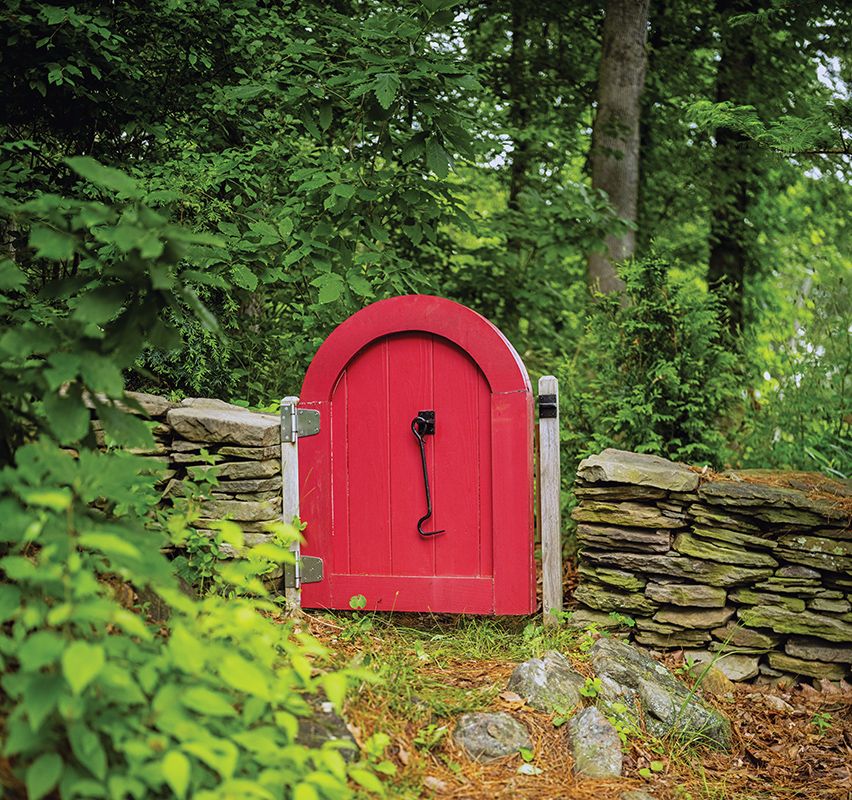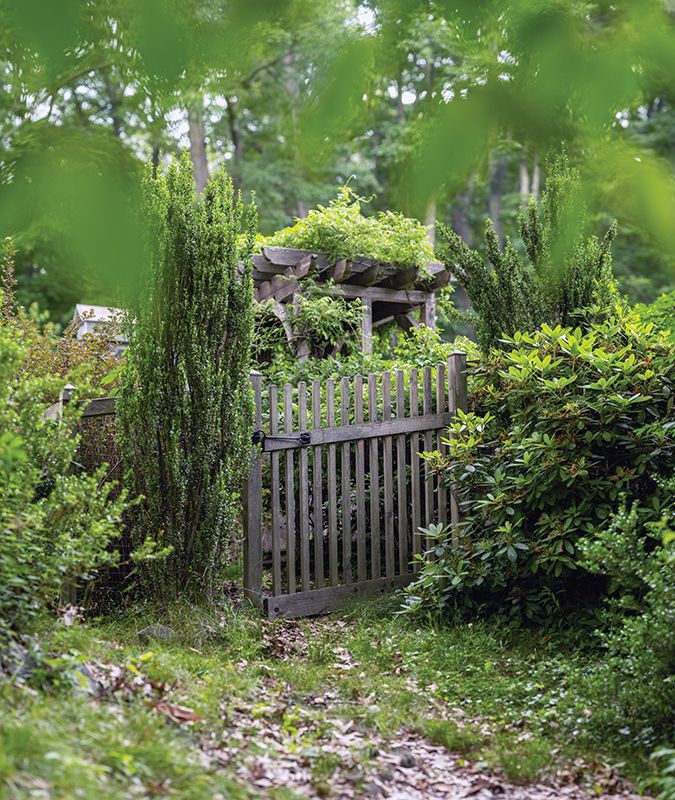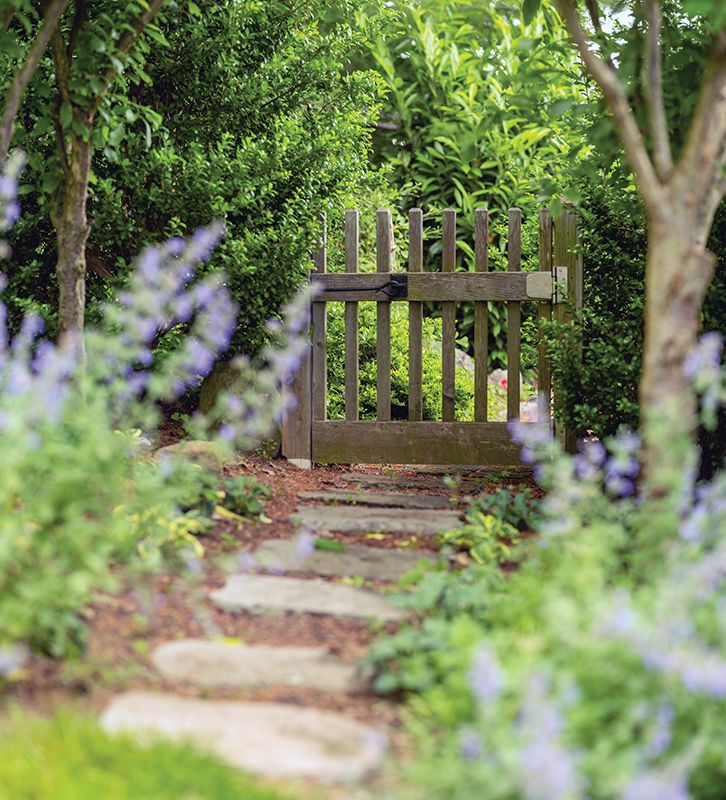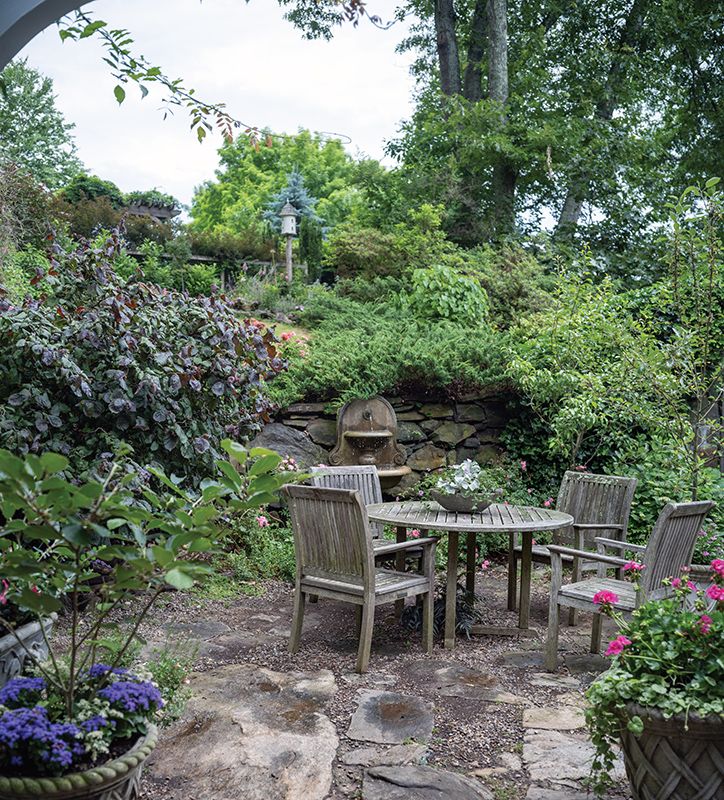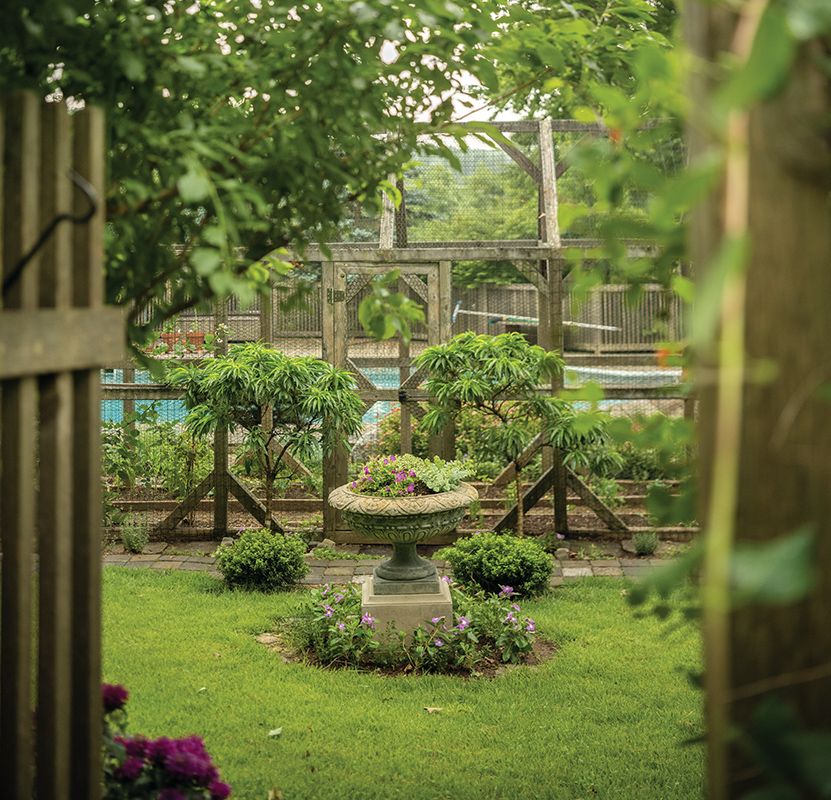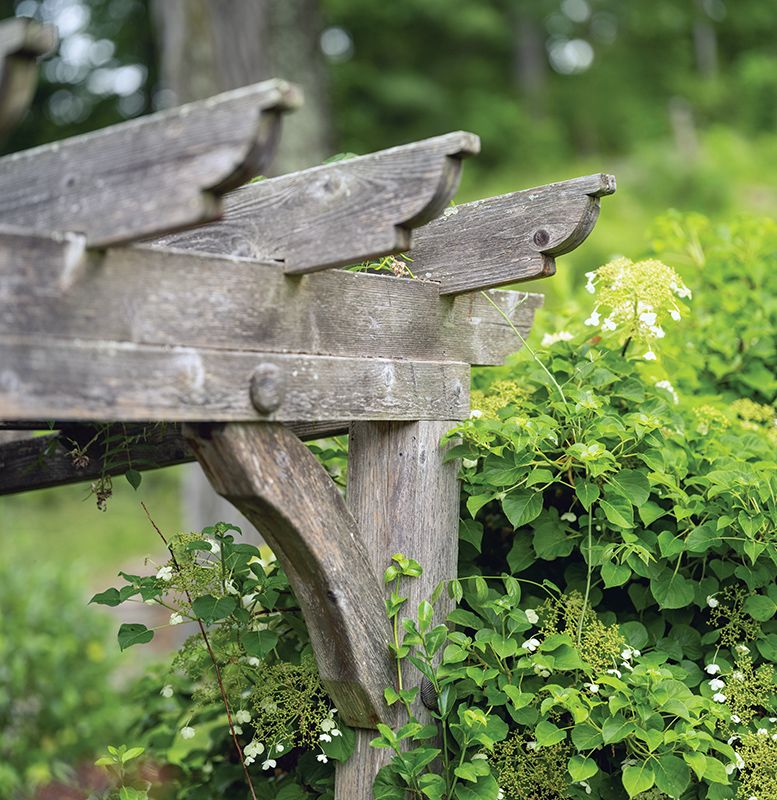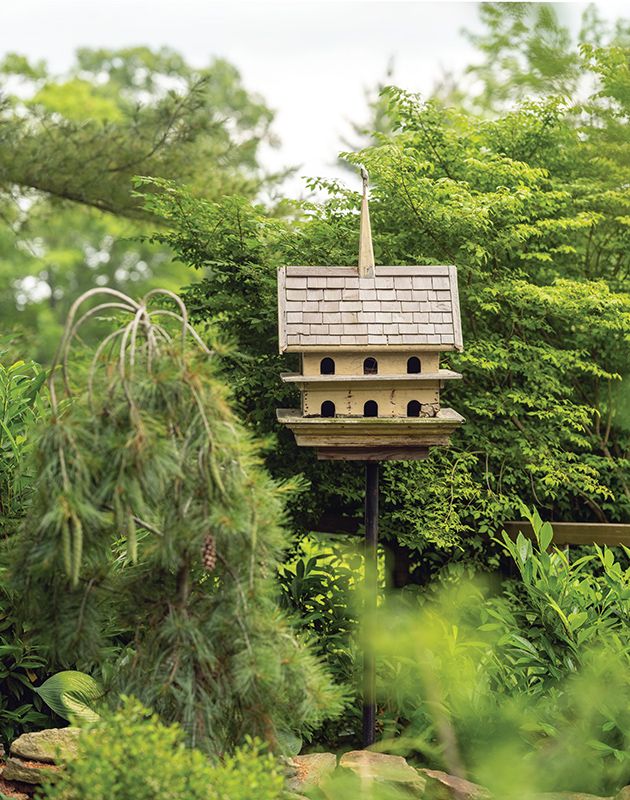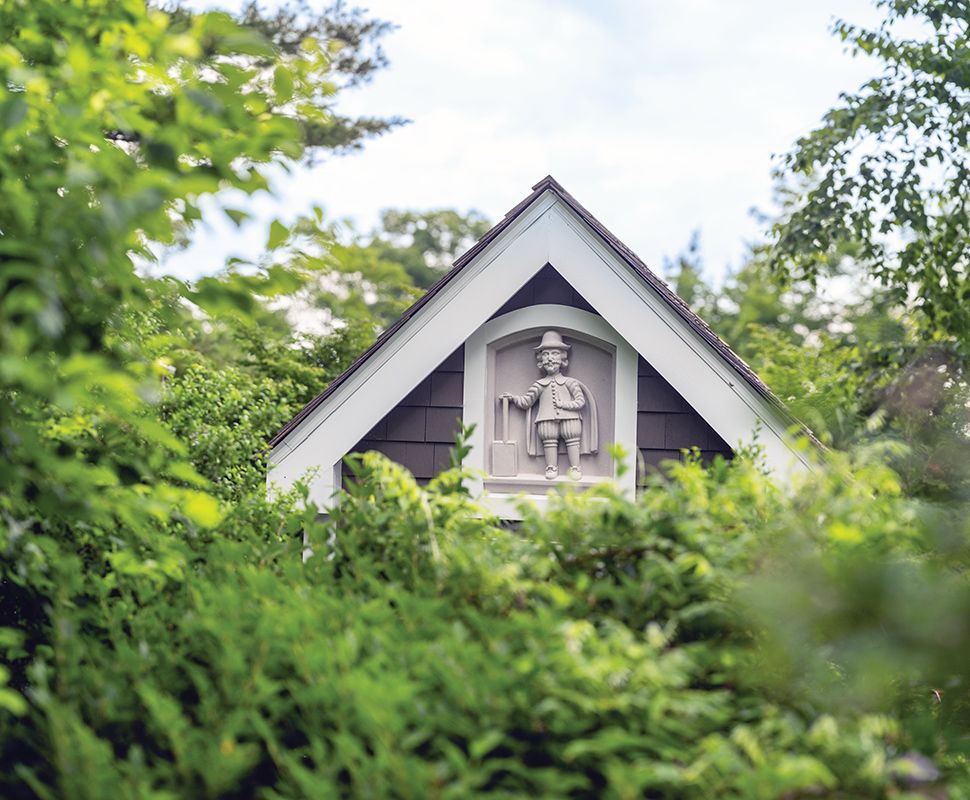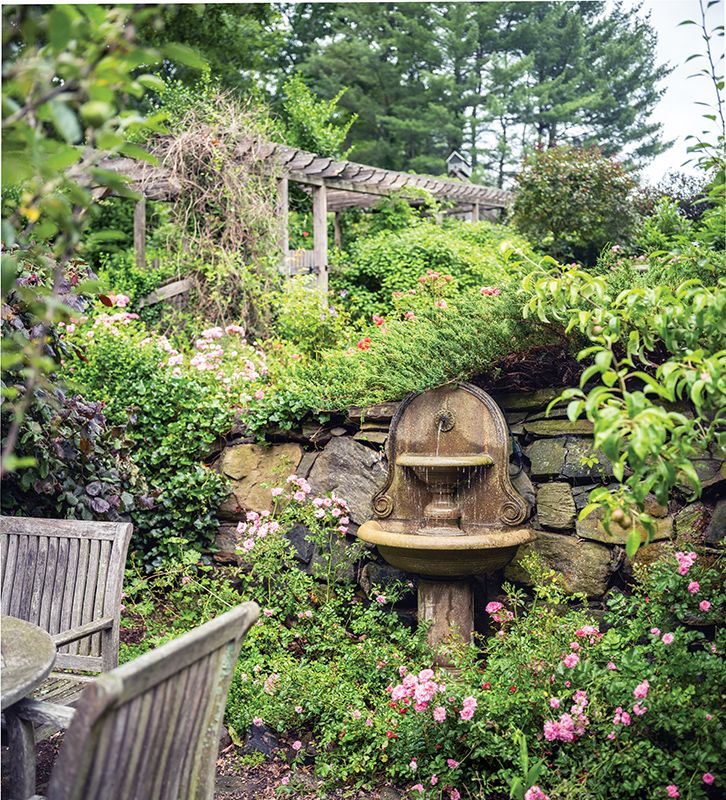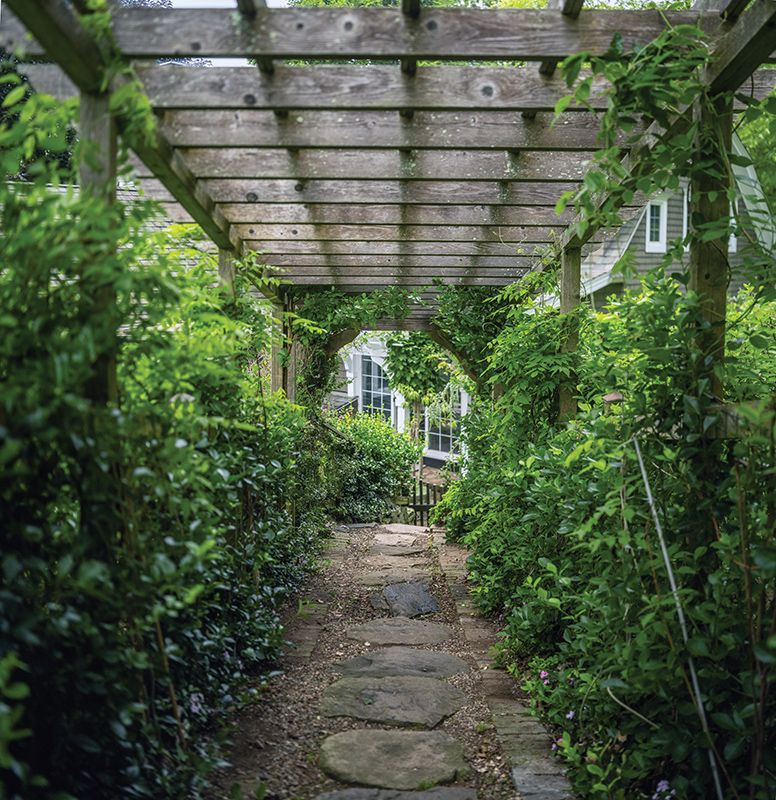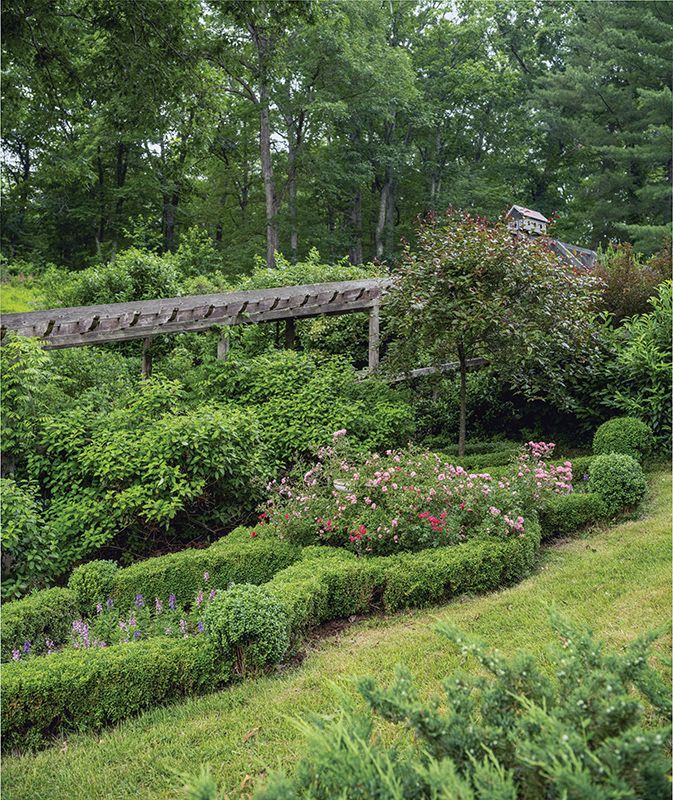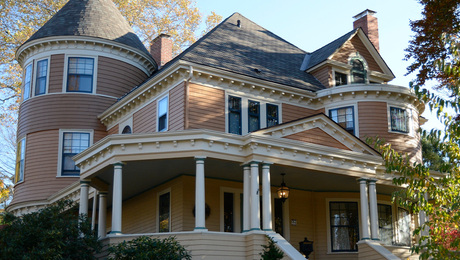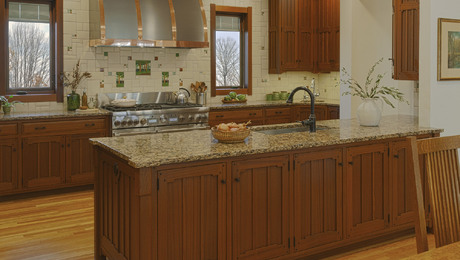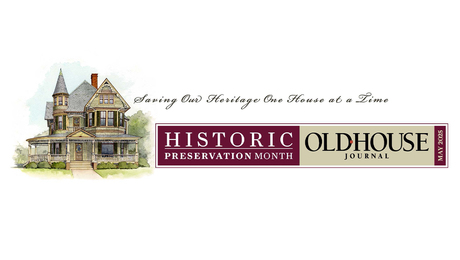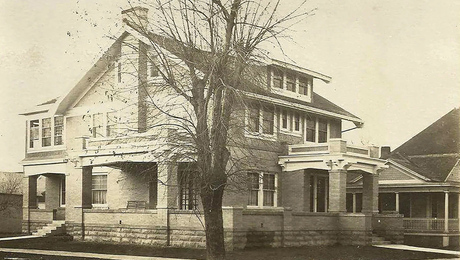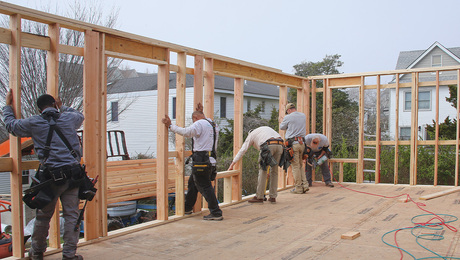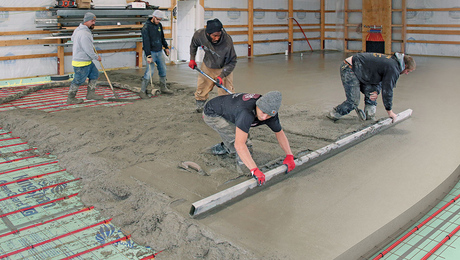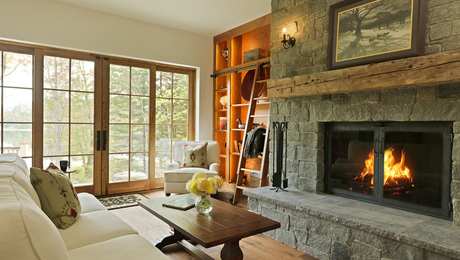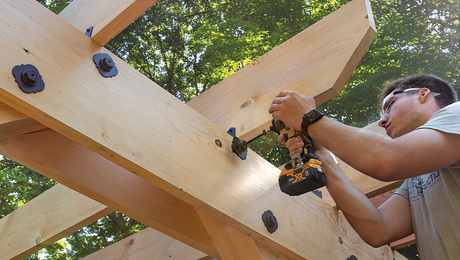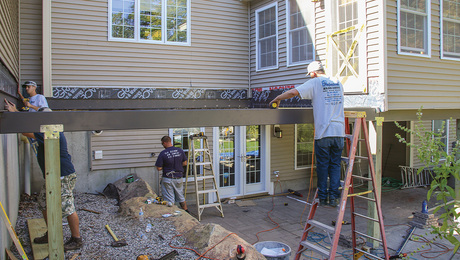English Arts & Crafts Sensibility at Rumford Hall
Additions made to this 1879 house strengthened its English Arts & Crafts motifs as a lucky history of stewardship continues with the current owners.
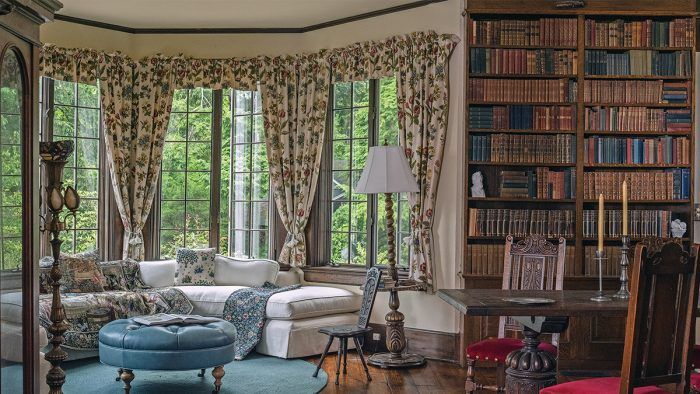
It was twenty years ago that a friend told Jeanne Farewell and Monty Denneau about a unique property in New York’s Hudson Valley. The house wasn’t for sale; the friend simply thought that Monty and Jeanne would find a rapport with the 1879 house and its 15 acres. In 2013, as the couple were looking to expand from their petite house, that special property went on the market. The friend had been right; there was instant chemistry.
Jeanne and Monty have always been more at home in the past but this house had a mystique. Lovingly preserved by previous owners, with many original features intact, the house centers on a massive Great Hall, 30 feet by 40 feet—just what Jeanne, an artist, art historian, and musician, needed for her grand piano and for recitals.
The engineering of the house fascinated Monty, who is an IBM Fellow and computer scientist. He was sold the moment he saw the turnbuckle on the second floor, part of a system that distributes the weight for the beams of the Great Hall. A student of the 19th-century English founder of the Arts & Crafts Movement William Morris, Jeanne saw Arts & Crafts earmarks inside and out.
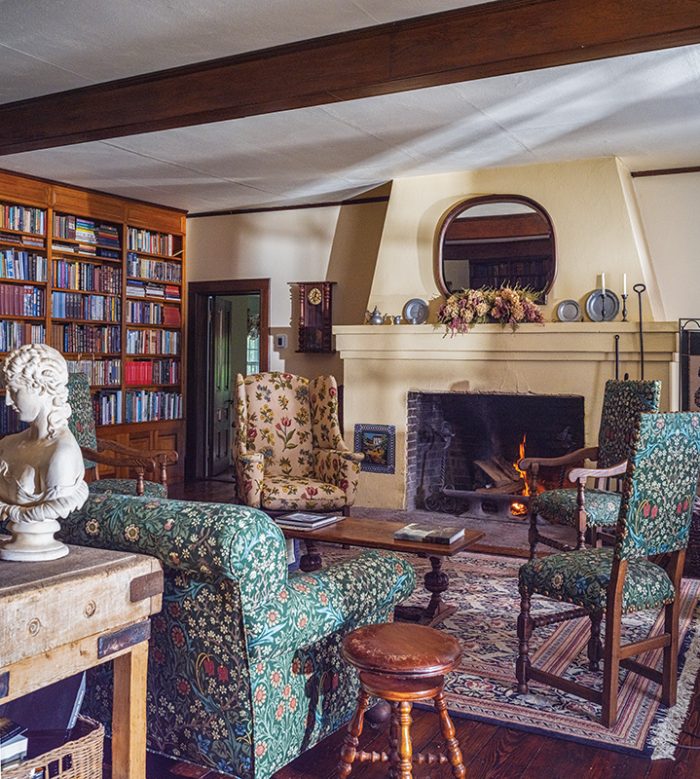 |
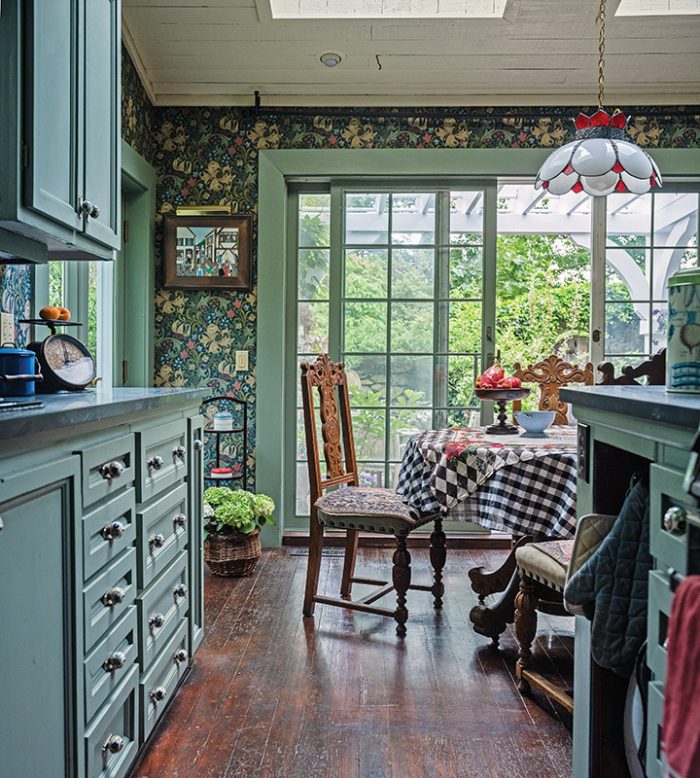 |
Rumford Rescues
The house had a series of fortunate “rescues” long before Jeanne and Monty moved in. It had been built on land slated to be flooded for a reservoir in the late 1800s, at which time its owners moved the structure to higher ground. Additions were made in the 1940s; Jeanne is convinced those additions strengthened the Arts & Crafts motif. “We think the original core was fairly simple,” she says.
A pivotal moment occurred just prior to Jeanne’s and Monty’s stewardship: John Dever took the house under his wing. A teacher with a penchant for woodworking, Dever had been looking for a well-preserved old house in need of TLC. When he bought it, in 1977, it had no insulation, a faulty roof, frozen upstairs plumbing, and windows nailed shut.
It required 3,000 gallons of oil annually to heat it. Before he married and raised two children in the house, he spent three years with a table saw set up in the Great Hall, constantly working on the house. “My only vacuum cleaner was a shop vac,” he says. Every fix enhanced the historic ambiance.
 |
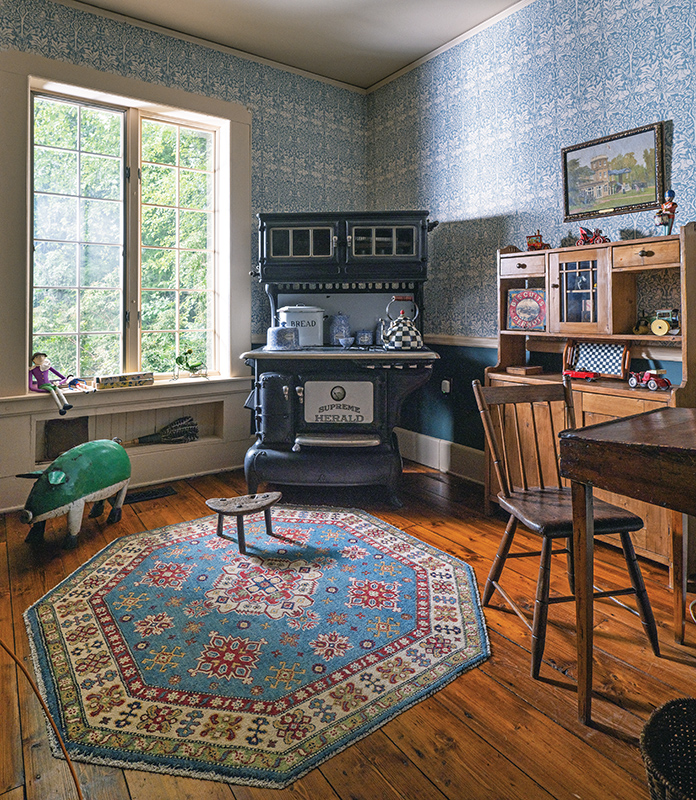 |
A Team Effort
Eventually, his wife joined the preservation effort, selecting appropriate fabrics for custom curtains and upholstery—fabrics with a strong Arts & Crafts affinity. When Dever and his family moved south, Jeanne and Monty purchased many of the furnishings that belonged to its early-1900s owners.
They adopted nearly a thousand books already on the library shelves and commissioned matching oak shelves for their own book collection. With the accumulated furnishings, “it’s like a time capsule,” Jeanne says. They named the house Rumford Hall, a nod to the historic shallow fireplace upstairs.
After visiting William Morris’s Reformed Gothic-style Red House, Jeanne realized that medieval themes and attention to detail were only part of the English movement; the Arts & Crafts sensibility should extend to outdoor spaces. She took cues from the flowers stylized in Morris & Co.’s paper and fabric patterns, adding tulips, roses, fritillarias, and lilies. Jeanne and Monty let their imaginations roam to create stone walls, staircases, pergolas, and gates.
The segue between house and garden is seamless. Floral themes indoors reference the garden, while Dutch doors and airy rooms with generous windows bring nature inside. Jeanne thinks that William Morris would approve of that dialog … and of the preservation ethic brought here by a succession of owners.
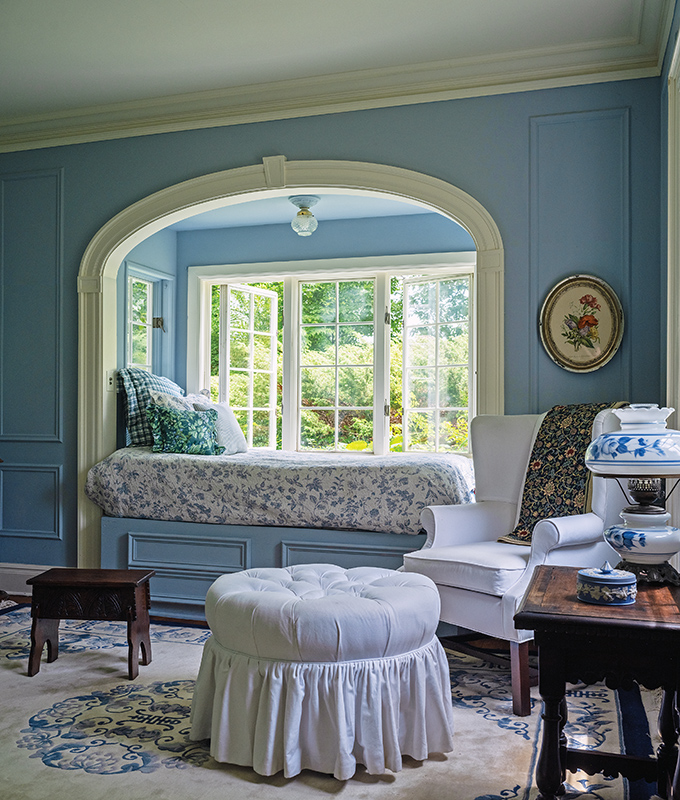 |
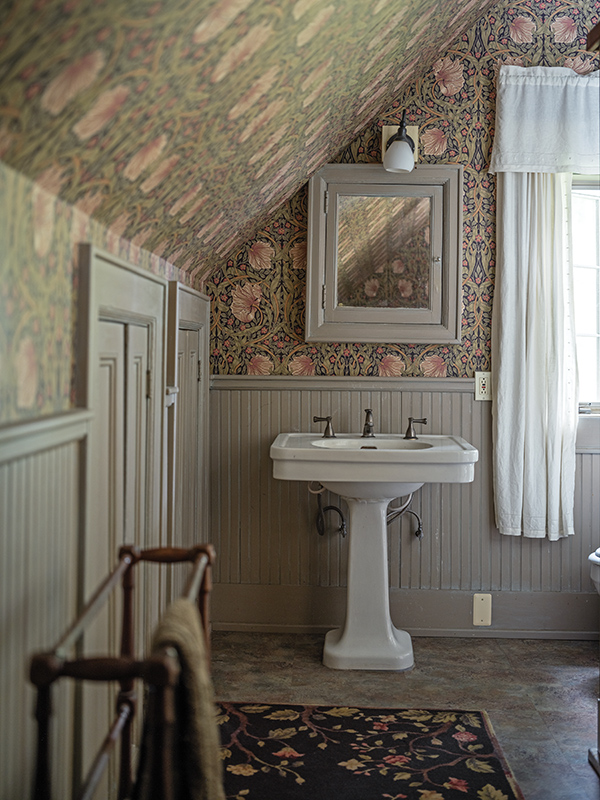 |
English Arts & Crafts Garden Rooms
The 1879 house sits on 15 acres with a significant slope. Not everyone would envision cohesive gardens, given the steep grade, but Jeanne Farewell felt strongly that an Arts & Crafts house should carry the theme outdoors.
She saw her landscape as an opportunity to express the philosophy that gave birth to the English Arts & Crafts Movement. Yes, she carried a deep affinity for roses, foxgloves, and other cottage flowers—but her primary goal was to create a link between the living spaces and nature.
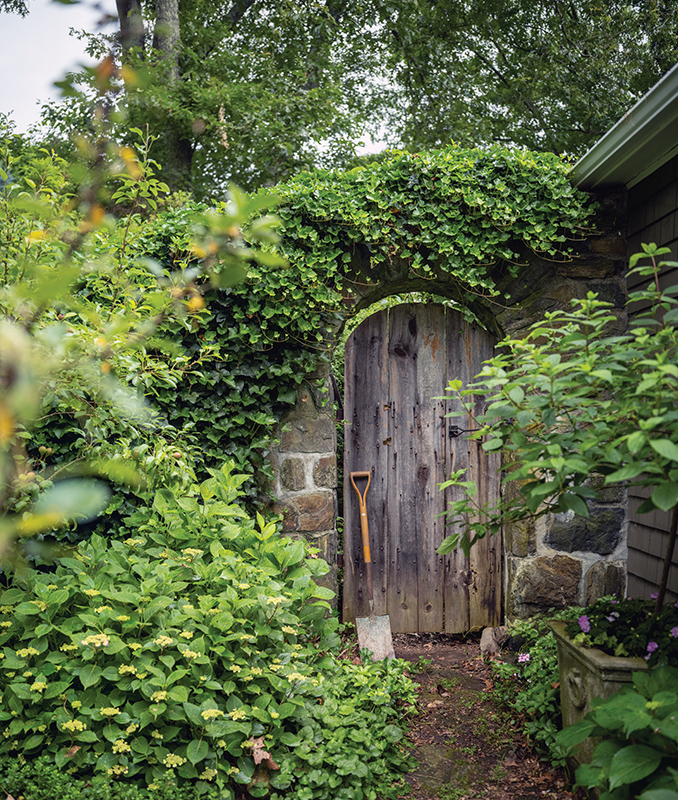 |
 |
Jeanne Approached the Space as a Series of Rooms
Not only are the “rooms” defined by wall-like hedges, fences, and structures, but also they’re furnished with seating and focal points. Craftsmanship is evidenced in the statuary, planters, and seating. The design has a welcoming informality. Beauty abounds.
A walk through the garden parallels the flow of the house. Echoing hallways indoors, garden corridors lead from room to room. Like closed doors, well-crafted gates beg to be opened; vistas are hidden until the next room is in view, lending a delicious feeling of mystery.
The pronounced slope became an asset, with each level revealing a theme: a pergola, an orchard, a caged berry patch. Indoor spaces convey comfort and security; outside, the feeling is more of an adventure or journey. Hidden niches thrill; dense foliage creates bowers that hide secret doors.
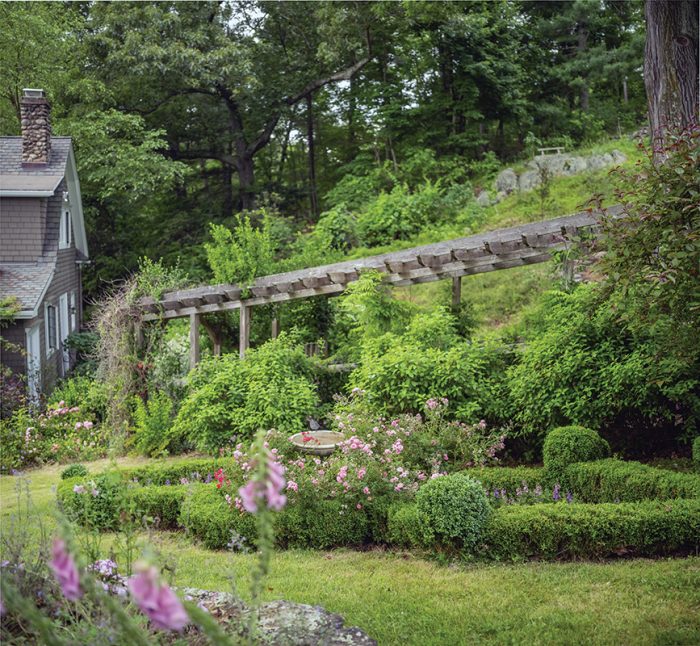 |
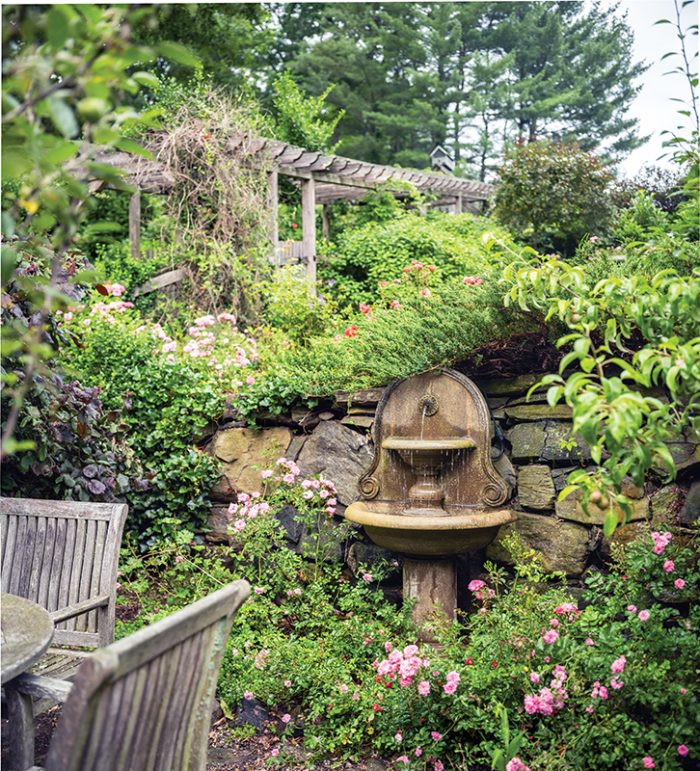 |
A Verdant Journey
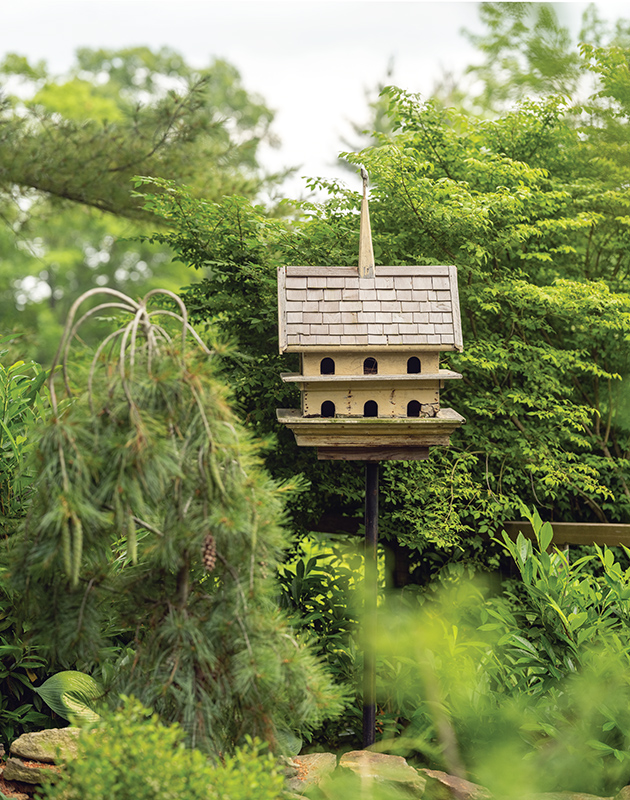
The journey begins in the courtyard, its seating area an extension of the kitchen. Recessed within a stone wall, the intimate space has a fountain for water music. Vines provide comforting enclosure while doors and gates suggest there is more to explore.
As with rooms in the house, each space discovered through a corridor or behind a gate features its own flavor, color scheme, and focal points. Even patterns relate back to those in the house, such as a geometric parterre with boxwood that corrals roses. Flowers and nature themes often reflect the wallpapers and fabrics found inside.
Native plants are an important feature here. Jeanne followed the Arts & Crafts tendency toward a simpler past. “Although [19th-century English designer] William Morris might not have known that native plants are critical to the environment, he did realize that, during the Middle Ages, people rarely traveled beyond their villages. They knew only the local blossoms.” Thus, Jeanne grows sweet fern, America holly, ninebark, sumac, and viburnums—our native, local plants.
RELATED STORIES
 |

